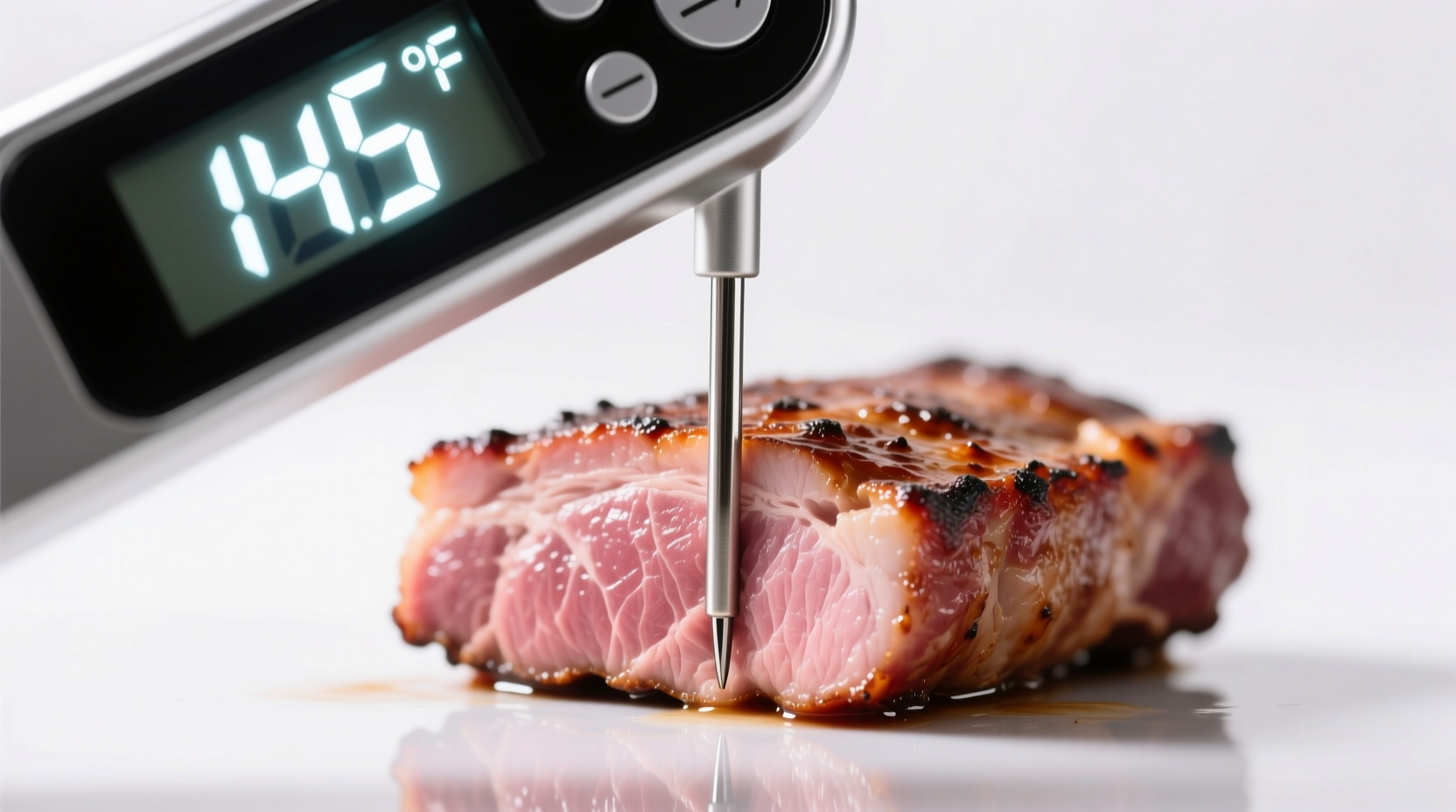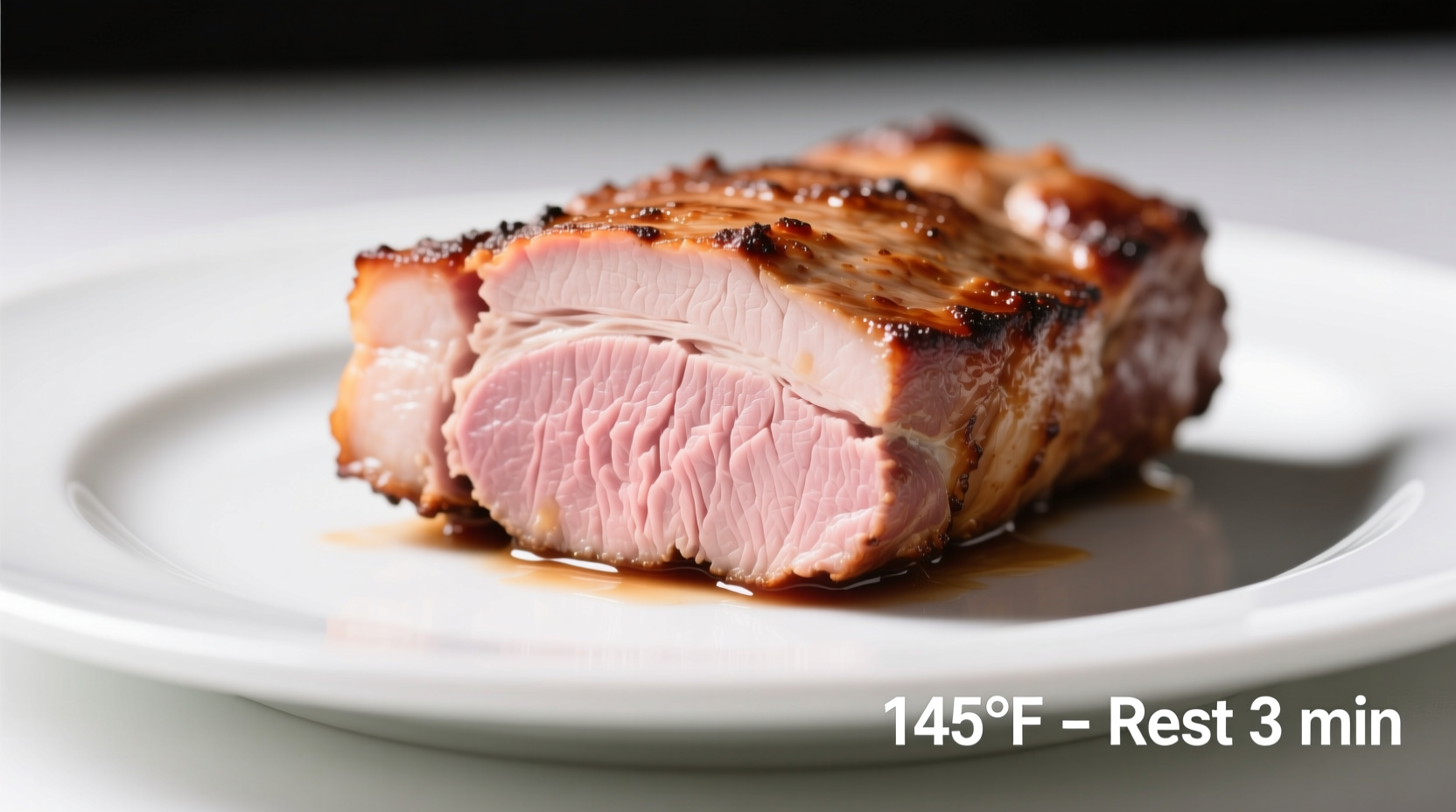The ideal internal temperature for perfectly cooked pork tenderloin is 145°F (63°C) with a mandatory 3-minute rest period. This precise temperature ensures food safety while maintaining optimal juiciness and tenderness, according to the latest USDA Food Safety and Inspection Service guidelines.
For home cooks aiming to prepare restaurant-quality pork tenderloin without compromising safety, understanding the precise temperature requirements is non-negotiable. Gone are the days of overcooked, dry pork—modern food science has refined the perfect balance between safety and quality.
Why 145°F Is the Pork Tenderloin Sweet Spot
For decades, conventional wisdom dictated cooking pork to 160°F, resulting in often dry, tough meat. The USDA revised its guidelines in 2011 based on extensive research showing that 145°F with a 3-minute rest time effectively eliminates pathogens while preserving moisture.
| Pork Cooking Standard | Temperature | Rest Time | Texture Result |
|---|---|---|---|
| Traditional guideline (pre-2011) | 160°F (71°C) | None | Dry, firm, often overcooked |
| Current USDA recommendation | 145°F (63°C) | 3 minutes | Medium-rare, juicy, tender |
| Chef preference (safe range) | 140-145°F (60-63°C) | 5 minutes | Medium, exceptionally moist |
This fact comparison table demonstrates how updated food safety science has transformed pork cooking standards. The lower temperature threshold works because pathogens like Trichinella spiralis are destroyed not just by temperature alone, but by the combination of temperature and time.
The Science Behind Safe Pork Cooking
When pork reaches 145°F and maintains that temperature during the rest period, it achieves what food scientists call "lethal heat treatment"—sufficient to destroy harmful bacteria including Salmonella and E. coli. The 3-minute rest period is critical because temperature continues to rise 5-10 degrees during this time (carryover cooking), providing an additional safety margin.
According to research published by the Institute of Food Technologists, the combination of 145°F internal temperature plus 3 minutes rest time achieves a 6.5-log reduction in pathogens—far exceeding the 5-log reduction required for food safety.
Proper Temperature Measurement Technique
Using an instant-read thermometer correctly determines your success:
- Insert probe into the thickest part of the tenderloin, avoiding bone or fat
- Take multiple readings from different areas to ensure even cooking
- Check temperature 5-10 minutes before expected doneness (pork cooks quickly)
- Remove from heat source at 140°F to allow for carryover cooking to 145°F

Complete Cooking Process Timeline
Follow this professional kitchen-tested sequence for perfect results every time:
- Preparation: Pat tenderloin dry, season, and bring to room temperature (30 minutes)
- Searing: Sear all sides in hot pan (2-3 minutes per side) to develop flavor
- Oven roasting: Transfer to 400°F oven until internal temperature reaches 140°F (12-15 minutes)
- Temperature check: Insert thermometer into thickest section
- Resting: Tent loosely with foil for exactly 3 minutes (critical safety step)
- Serving: Slice against the grain into ½-inch medallions
Contextual Temperature Considerations
While 145°F is the universal standard, certain context boundaries affect your approach:
- Smoking or slow cooking: For methods below 250°F, maintain internal temperature above 140°F for less than 4 hours to prevent bacterial growth
- Stuffing variations: If your tenderloin contains stuffing, ensure both meat and stuffing reach 165°F
- Vacuum-sealed cooking: Sous vide requires precise time-temperature combinations (135°F for 1-4 hours)
- Immunocompromised individuals: Some medical professionals recommend 150°F for vulnerable populations despite USDA guidelines
Visual Doneness Indicators (Supplemental Only)
While a thermometer is essential, these visual cues confirm proper cooking:
- Juices run faintly pink, not red
- Meat feels firm yet yielding (like the base of your thumb when making an OK sign)
- Cut surface shows light pink center with opaque exterior
Never rely solely on color or clear juices—these are unreliable indicators of safety. The CDC explicitly warns that pork can appear brown before reaching safe temperatures, creating dangerous false confidence.
Common Temperature Mistakes to Avoid
Professional kitchens see these temperature errors repeatedly:
- Thermometer placement error: Measuring near bone or fat gives false readings
- Insufficient resting time: Cutting too soon releases precious juices
- Overestimating carryover cooking: Removing too early results in undercooked center
- Using inaccurate thermometers: Failing to calibrate equipment properly
Test your thermometer's accuracy by placing it in ice water (should read 32°F/0°C) or boiling water (212°F/100°C at sea level).
Perfect Pork Tenderloin: Temperature Troubleshooting
When things don't go according to plan:
- Under 140°F: Return to heat source and check every 2 minutes
- 140-145°F: Remove immediately and rest—carryover cooking will finish the process
- Over 150°F: Slice thinly against grain and serve with sauce to compensate for dryness
Remember that thicker tenderloins require lower oven temperatures (375°F) with longer cooking times to prevent exterior overcooking before the center reaches proper temperature.
Frequently Asked Questions
Can pork tenderloin be pink at 145°F and still be safe?
Yes, pork tenderloin is perfectly safe at 145°F even if slightly pink. Modern farming practices have virtually eliminated trichinosis risk. The pink color comes from myoglobin, not blood, and doesn't indicate undercooking when the proper temperature has been reached.
Why does pork need to rest after reaching 145°F?
The mandatory 3-minute rest period allows temperature to equalize throughout the meat (carryover cooking) and gives proteins time to reabsorb juices. Cutting too soon releases moisture, resulting in dry meat. This rest time is critical for both food safety and quality.
What happens if I cook pork tenderloin to 160°F?
Cooking pork tenderloin to 160°F typically results in dry, tough meat as excessive heat causes proteins to contract and expel moisture. While still safe, the texture becomes significantly less enjoyable. The USDA lowered the recommended temperature specifically to prevent this overcooking issue while maintaining safety.
How do I calibrate my meat thermometer for accurate readings?
Calibrate your thermometer by placing the probe in ice water (should read 32°F/0°C) or boiling water (212°F/100°C at sea level). If inaccurate, adjust according to manufacturer instructions. Digital thermometers typically have a calibration button, while dial thermometers can be adjusted with a wrench. Test before each important cooking session.











 浙公网安备
33010002000092号
浙公网安备
33010002000092号 浙B2-20120091-4
浙B2-20120091-4